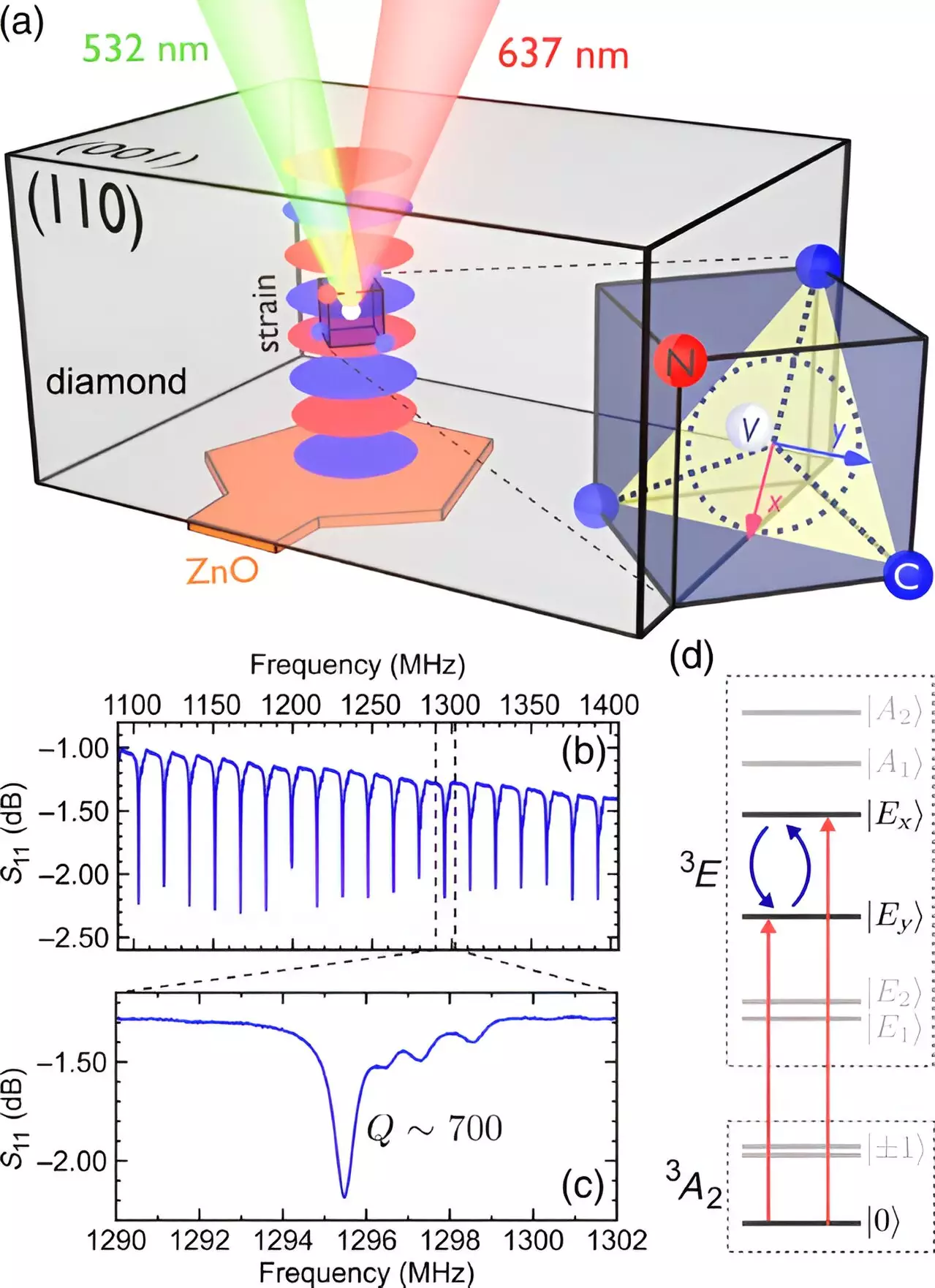In a groundbreaking study conducted by Cornell University researchers, the fascinating potential of acoustic sound waves in manipulating the motion of electrons within a diamond lattice defect was uncovered. This innovative technique opens up new possibilities in enhancing the sensitivity of quantum sensors and can revolutionize the field of quantum devices.
The research, titled “Coherent acoustic control of defect orbital states in the strong-driving limit,” was a collaborative effort between Gregory Fuchs, a distinguished professor of applied and engineering physics, and his postdoctoral associate Brendan McCullian, along with Erich Mueller, a physics professor, and his doctoral student Vaibhav Sharma. Their findings were published in the esteemed journal PRX Quantum.
The quest for advancements in quantum information technology necessitates the development of novel techniques for manipulating electrons and other microscopic particles. This study showcased how sound waves could induce “quantum jumps” between electron orbits, a pivotal discovery in the realm of quantum research.
McCullian’s groundbreaking work involved constructing a microscopic speaker on a diamond chip, emitting sound waves at a frequency precisely aligned with electronic transitions. Through meticulous demonstration akin to techniques used in magnetic resonance imaging, he successfully exhibited coherent control over a single electron within the diamond chip.
In quantum computing, qubits are the fundamental units, analogous to classical computer bits, and they must remain in a coherent state to perform meaningful tasks. However, qubit coherence is exceptionally fragile and susceptible to environmental fluctuations. By integrating spin resonance techniques traditionally executed with microwaves and magnetic fields into the acoustic domain, Fuchs and his team aimed to enhance qubit coherence.
The researchers ingeniously acoustically manipulated orbital states, akin to spin resonance methods, and harnessed well-established tools like coherent control and Rabi oscillations. By delving into the interaction of the NV center, a critical defect in diamond lattices crucial for quantum sensing, with noise sources, they devised innovative strategies to counter spectral diffusion and maintain stable optical transitions in quantum networking applications.
Fuchs emphasized the importance of interdisciplinary collaboration in driving scientific progress. The synergy between experimental techniques developed in his lab and the theoretical analyses provided by the Department of Physics group led by Mueller was instrumental in framing predictions and interpreting results effectively. Mueller lauded the synergy between acoustic waves and electron motion, drawing parallels to how vibrations synchronize with a playground swing’s motion to transfer energy seamlessly.
The transformative potential of acoustic sound waves in orchestrating electron motion not only pushes the boundaries of quantum research but also underscores the importance of interdisciplinary teamwork in unraveling scientific mysteries. As we delve deeper into the realm of quantum technologies, the integration of innovative approaches like acoustically-driven control paves the way for unprecedented discoveries and applications.



Leave a Reply